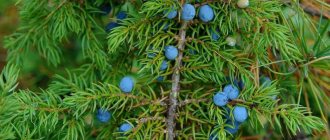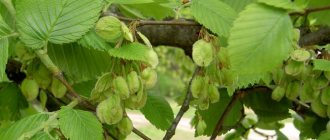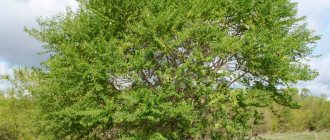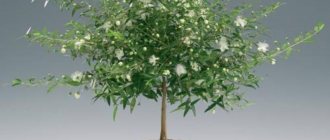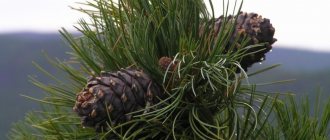Author: Elena N. https://floristics.info/ru/index.php?option=com_contact&view=contact&id=19 Category: Houseplants Published: February 02, 2019Last edits: January 11, 2021
- The myrtle has dried up
- Properties of myrtle
- Common myrtle (Myrtus communis)
plant (lat. Myrtus) belongs to the genus of evergreen woody plants of the Myrtaceae family, the flowers of which contain essential oil. The natural habitats of myrtle are the Mediterranean, the Azores and the north of the African continent. It is no coincidence that the name of the plant is consonant with the Greek word “myrrh”, which means “balm, liquid incense”, because it is as a cult attribute that myrtle essential oil has long been used in temples of various concessions. Legend says that Adam, expelled from Eden, brought the myrtle flower with him to Earth as a memory of the lost paradise. Many peoples have many myths, beliefs, traditions, rituals and signs associated with this plant. The myrtle tree has long been considered a symbol of glory, peace and hope. Our ancestors had myrtle flowers not only for cult purposes, but also for medical and cosmetic purposes, and some myrtle preparations are still popular today. But for plant lovers, a blooming and fragrant myrtle is an object of admiration and a source of aesthetic pleasure, especially since home myrtle is undemanding in care, and those who know how to care for myrtle can easily achieve the optimal shape for a plant that will decorate your home and help preserve To your health.
Planting and caring for myrtle
- Flowering: June-July.
- Lighting: bright sunlight until noon, then bright diffused light (southern, western and eastern windows).
- Temperature: in summer – normal for residential premises, in winter – 5-10 ˚C.
- Watering: in summer - frequent and plentiful; in cool seasons, watering is reduced.
- Humidity: high. Daily spraying of leaves is recommended, especially in hot weather.
- Feeding: from March to August once a week with complex mineral fertilizers.
- Dormant period: winter; in cool conditions - up to three months, in normal conditions - a month and a half.
- Replanting: young plants - annually, adults as needed.
- Pruning: after flowering or early spring.
- Reproduction: cuttings, less often seeds.
- Pests: scale insects, aphids, spider mites, whiteflies, mealybugs.
- Diseases: root rot.
Read more about growing myrtle below.
When to replant
- The plant was just purchased in a store;
- The age of myrtle is from one to three years;
- Pests or diseases have appeared;
- The plant has grown a lot, and the flower container has become too small.
In the first three years, it is recommended to replant myrtle regularly once a year, as the crop grows very actively. For older plants, one transplant every three years will be enough. The procedure is carried out only by transshipment, preserving the earthen coma. Favorable time is the period from November to March, when the plant is at rest. The new flower container should not be much larger than the previous one. It is recommended to leave the root collar above the soil surface when planting.
An indoor tree purchased in a store must be replanted, as it requires replacing the soil mixture with a better one that is appropriate for the given type of plant. This will help avoid possible problems with the growth and development of the flower due to the presence of harmful impurities in the purchased soil.
When pests appear, myrtle must be replanted without preserving the earthen ball, but, on the contrary, with a complete replacement of the old soil mixture. It is recommended to handle the roots carefully so as not to damage them. This procedure is forced and is a chance to save the entire indoor plant from death.
Another important reason for replanting myrtle is the increased size of the root system, which cannot develop in such a cramped area and helps to stop the growth and development of the crop. Loop-shaped and twisted roots entangle the entire earthen lump and fill the entire volume of the flower vessel. In this case, the transplant procedure cannot be postponed for a long time.
Botanical description
Myrtle, which according to various sources has from forty to one hundred species, in its natural habitat can grow up to three meters in height, and indoor myrtle, under the most favorable conditions, reaches only a meter. Usually myrtle at home is a tree with a round crown 30-60 cm tall. Small leathery, as if polished, leaves of myrtle are located on the shoots sparsely and oppositely on short petioles, they have an elongated shape, the tops of the leaves are pointed. Flowers, simple or double, are either single or collected in a raceme. The fruit is a nut or drupe berry.
An interesting fact is that myrtaceae include such valuable plants for humanity as tea tree, eucalyptus, and clove tree.
Notes
- For the convention of indicating the class of dicotyledons as a superior taxon for the group of plants described in this article, see the section “APG Systems” of the article “Dicotyledons”.
- Etymological dictionary of the Russian language. Vol. 10: M / Under general. ed. A. F. Zhuravlev and N. M. Shansky. - M.: Moscow State University Publishing House, 2007. - 400 p. — ISBN 978-5-211-05375-5.
- Myrtle // Biblical encyclopedia of Archimandrite Nikephoros. - M., 1891-1892.
- Myrtle // Jewish Encyclopedia of Brockhaus and Efron. - St. Petersburg, 1908-1913.
Growing myrtle from seeds
How to propagate myrtle by seeds at home? At the beginning of spring, myrtle seeds are sown on the surface of a substrate consisting of equal parts of sand and peat, in a container 7-10 cm deep, sprinkled on top with a layer of the same substrate 3-5 mm thick and, covered with glass, kept at a temperature of about 20 ºC, ventilating and moistening the crops, as well as removing condensation from the glass.
- Crassula, Crassula or Money Tree
Shoots appear in a week or two, and when the seedlings grow 2-3 true leaves, they are planted in the same substrate in individual pots so that the root collar remains above the soil surface. A month after picking, the seedlings are fed with nitrogen fertilizer of weak consistency.
However, amateur breeders should know that myrtle grown from seeds:
- will bloom no earlier than in 4-5 years;
- is unlikely to retain varietal characteristics.
In addition, the germination of myrtle seeds sharply decreases after just a year of storage, and obtaining them is problematic, since this will require artificial pollination of the plant.
Caring for myrtle at home
Growing conditions
Caring for myrtle at home includes watering, pruning and feeding the plant, as well as creating optimal or at least necessary conditions for it. The myrtle houseplant prefers southern, western and eastern window sills and is tolerant of drafts, temperature changes and direct sunlight. Moreover, if there is no sun, the myrtle will not bloom. In summer, myrtle prefers life in the fresh air; in winter, the plant needs coolness - 5-10 degrees Celsius, and the best place for it would be a glazed, unheated balcony.
In the warm season, myrtle should be watered Insufficient or infrequent watering can cause the plant to drop its leaves. With the onset of cold weather, watering is reduced, but if the plant spends the winter indoors with heating devices running, it will have to be watered just as abundantly as in the summer.
In addition, there will be a need to spray the leaves of the plant with water at least once a day, since myrtle needs high air humidity, and you need to remember this in winter, if the temperature in the room with myrtle is above 15 ºC, and in summer. Water for water procedures and irrigation must be settled or passed through a filter.
Once every week or two from March to August, myrtle needs fertilizing. If you are growing a bonsai from myrtle or you are not interested in its flowering, then feed the plant with a complex fertilizer for ornamental foliage plants, but if you want to see myrtle bloom, then apply fertilizer for flowering plants.
- How to pick pelargonium and what to feed it with later
Myrtle has a pronounced dormant period, the duration of which determines the location of the plant: if myrtle overwinters in a cool place or on a northern windowsill, then it can rest for up to three months, and if it is warm and in bright light, then only for one and a half months.
Trimming
Caring for myrtle also involves giving its crown the desired shape. The formation of myrtle depends on what you are growing it for. Many people like myrtle in the form of a standard tree with a neat compact crown, but there are people who do not care what the plant looks like, as long as it “blooms and smells.” In any case, do not get too carried away with pruning the side shoots of young plants or pinching them excessively.
On the other hand, myrtle grows quickly, is easy to regenerate, and you always have the opportunity to change your plans for its appearance. The main thing is that the formation of the crown should be done in early spring or after flowering.
Transfer
Young plants are replanted annually, adult myrtles - as needed, which is determined in this way: if the freshly watered soil dries out within 24 hours, then it is time to increase the amount of substrate, and, therefore, a larger pot will be needed. Choose a pot that is only a couple of centimeters in diameter wider than the previous one. It is better to replant in the spring, using the method of transferring the plant from an old container to a new one, since it does not injure the root system.
Trimming
A tree as round as a lollipop is not the original type of myrtle: this is how it is formed when pruned. If the bush is started, it will have a pyramidal crown shape with a thickened bottom.
An important point: the more often you prune, the less often the myrtle will bloom. So decide for yourself what will please the eye more: flowers or a green crown.
Pruning is done with pruning shears or garden shears. The best time of year for this procedure is spring.
- Watch the density of the plant: myrtle will not like pruning too often due to the weak trunk.
With rational pruning and the whole sum of favorable factors given in the article, myrtle can grow in a couple of years to the state of a beautiful lush tree, which can already be planted in a floor tub.
By the way, some plant growers go further and, using pruning, make dwarf bonsai varieties from myrtle. It turns out quite successfully! To do this, the trunk is pruned to achieve bushiness, and the plant itself is transplanted into a wide and flat pot, covering the soil with moss.
View this post on Instagram
